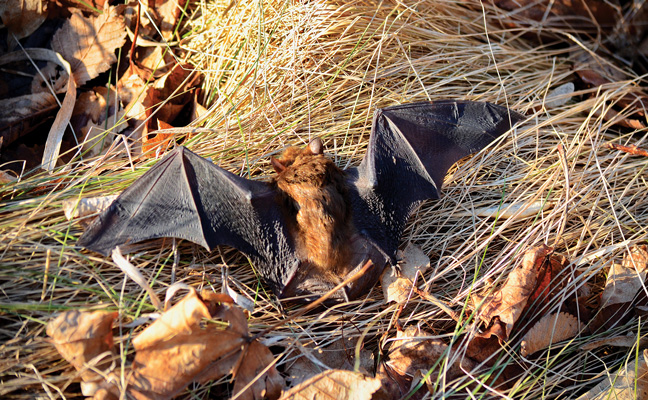
Every pest management professional (PMP) has, or should have, an ultraviolet (UV) light function on their flashlight for detecting rodent urine and various fungi in the field. However, a surprising new study from the University of Georgia’s (UGA’s) Warnell School of Forestry and Natural Resources suggests that PMPs can also detect bats this way.
Researchers have confirmed that at least six species of North American bat exhibit photoluminescence, meaning they glow green when exposed to UV light. The green light is emitted specifically from the bats’ wings and hind limbs. Lead author and UGA graduate student Briana Roberson noted that the characteristics found in these species differ from other nocturnal mammals that glow, suggesting a unique biological mechanism at work. To conduct the study, the team examined both male and female adult specimens of the following species:
- big brown bats (Eptesicus fuscus)
- eastern red bats (Lasiurus borealis)
- Seminole bats (L. seminolus)
- southeastern myotis (Myotis austroriparius)
- gray bats (M. grisescens)
- Brazilian free-tailed bats (Tadarida brasiliensis)
The specimens came from the mammal collections of the Georgia Museum of Natural History in Athens, Ga. Per the study, “most specimens were collected in Georgia, USA, but collection localities ranged geographically across the United States, including South Carolina, Tennessee, Illinois, and California. Specimens ranged from 22 to 103 years since collection.”
The green color and its specific location on the body suggest that this trait is likely genetic or inherited, rather than a temporary effect caused by something in the environment the bats ingest or touch. As co-author Dr. Steven Castleberry explained in a news release, this phenomenon is “ultimately some sort of mutation” that gets perpetuated because it is somehow beneficial.
Now that the glow is confirmed, the next question to answer is why. It does not appear to be for camouflage, mating or sex or species recognition, because the color is consistent across both male and female specimens. The current hypothesis suggests the glow may be an inherited trait used for communication, or possibly an “artifact” from an evolutionary purpose that no longer exists.
Leave A Comment